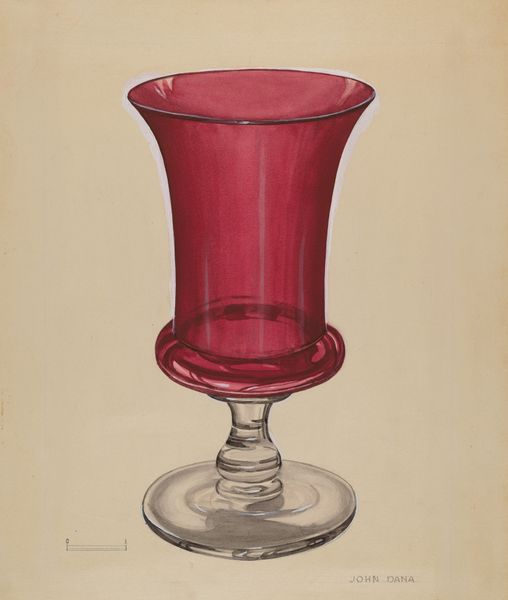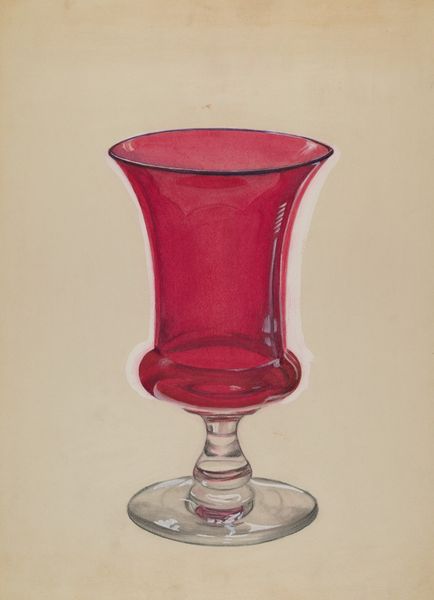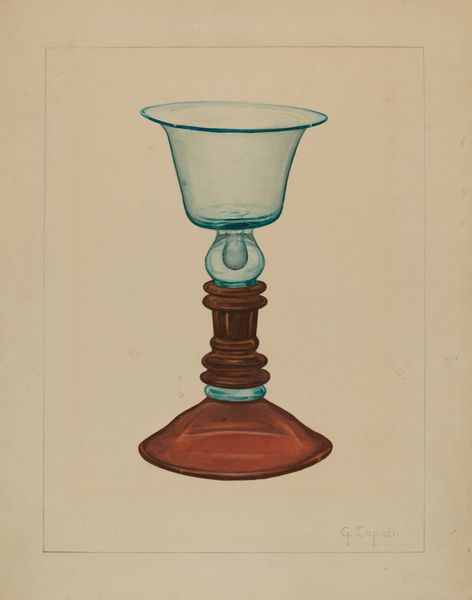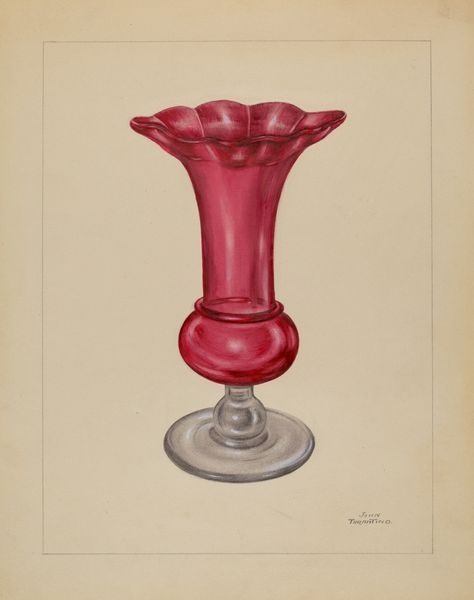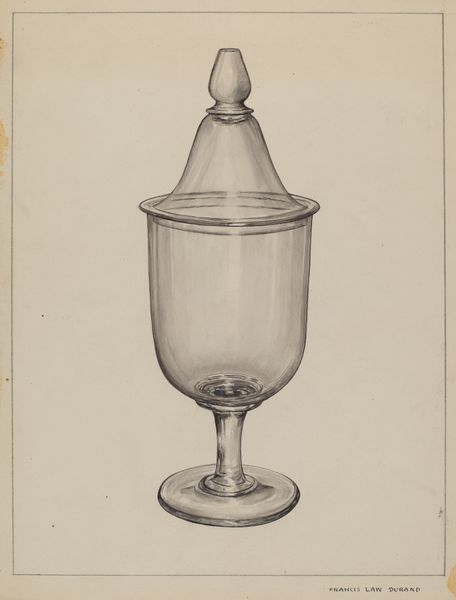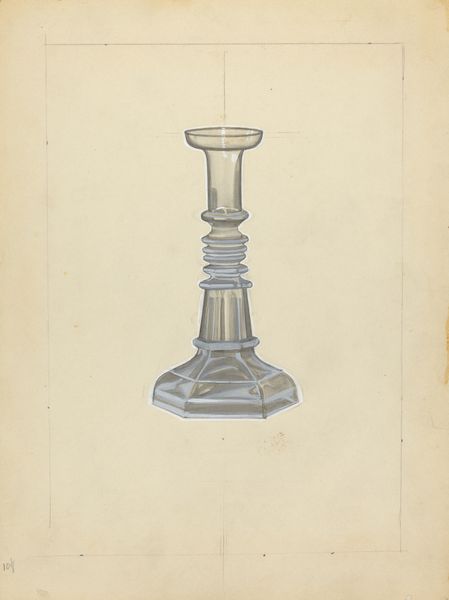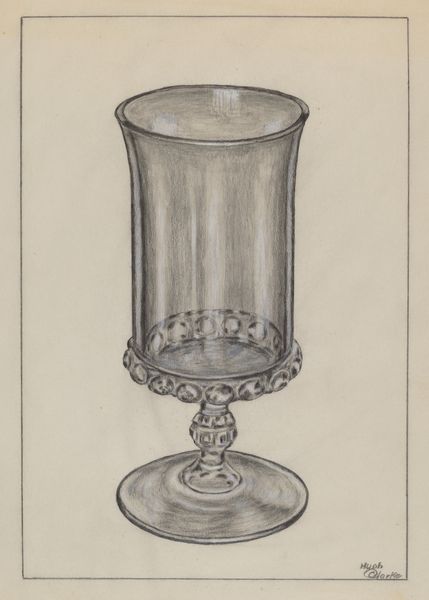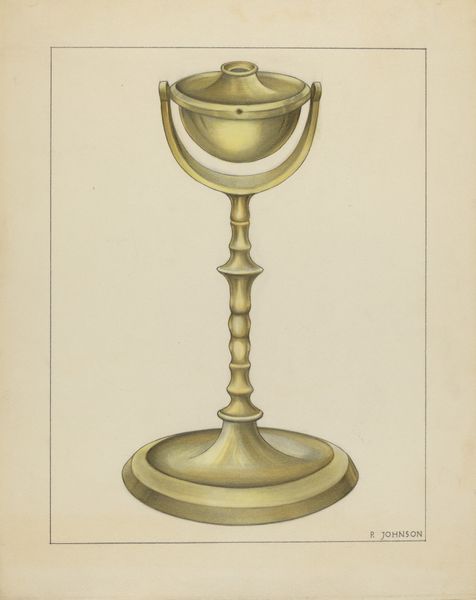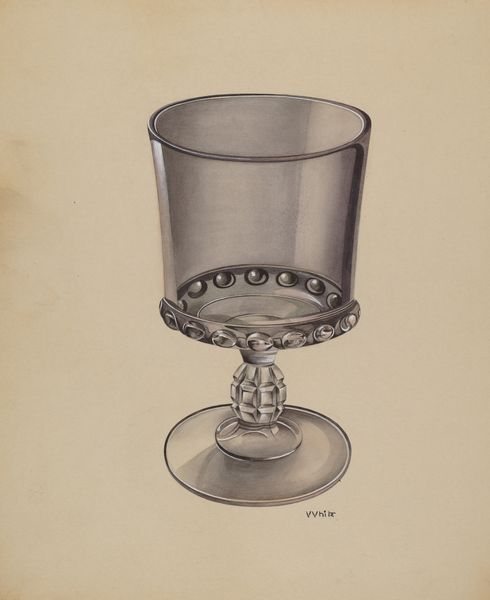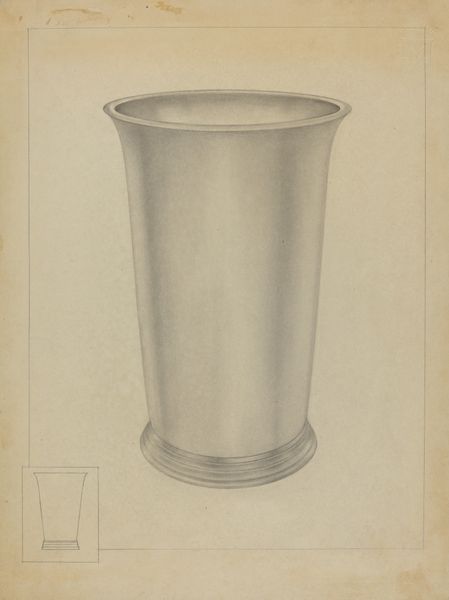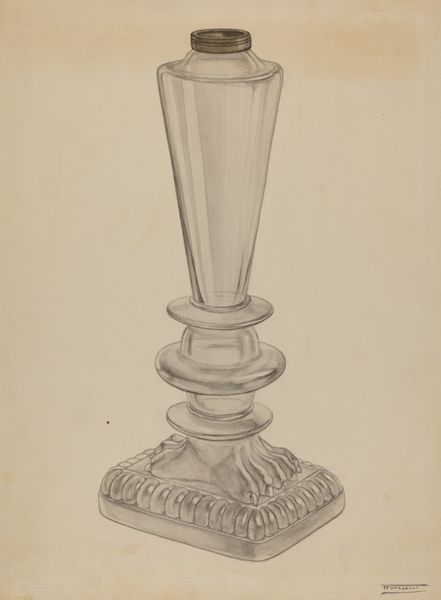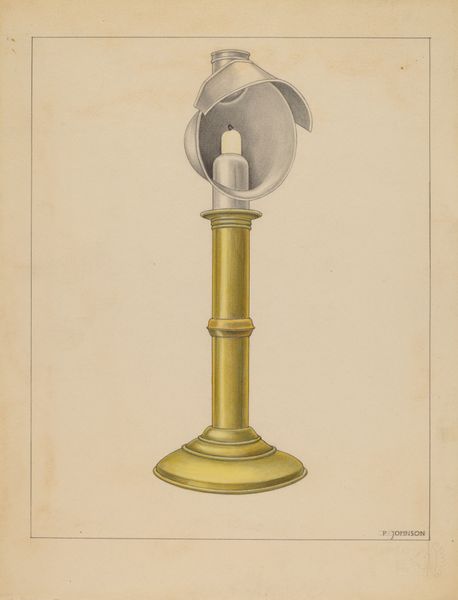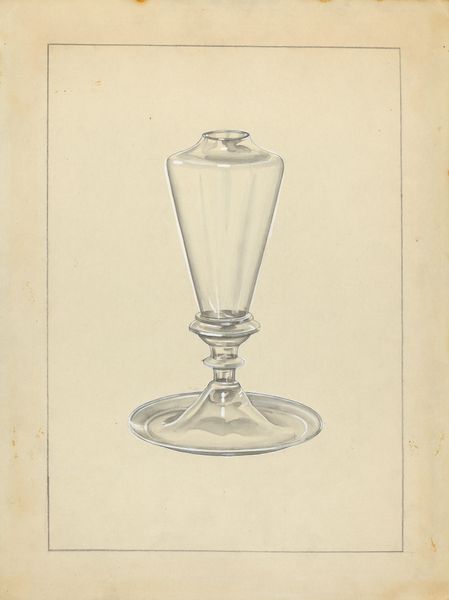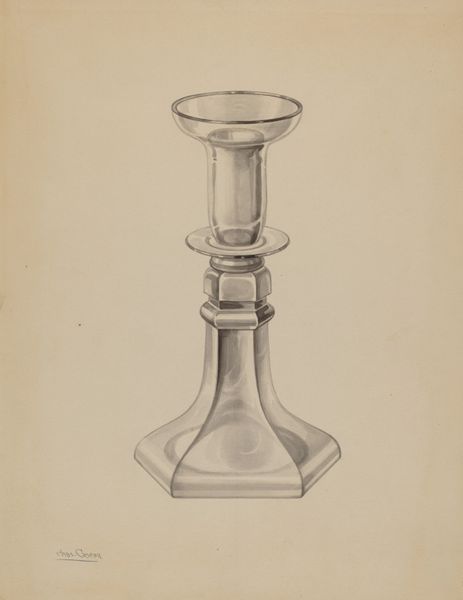
drawing, watercolor
#
drawing
#
watercolor
#
watercolour illustration
#
watercolor
#
gold element
Dimensions: overall: 30 x 22.6 cm (11 13/16 x 8 7/8 in.) Original IAD Object: 7 1/2" high
Copyright: National Gallery of Art: CC0 1.0
Curator: We're looking at a watercolor and drawing piece called "Vase," created around 1936 by John Fisk. What's your first impression? Editor: There's a quiet dignity to it. It is so simple, but it still makes me feel as though it represents more complex values and is capable of engaging in nuanced sociopolitical and identity contexts. The singular, bright, intense red against that plain paper backdrop does add to its inherent weightiness. Curator: Absolutely, the use of the paper itself is interesting. The artist makes a statement just by the act of drawing it. We have to acknowledge that while it’s not an artwork brimming with visible social critique, it comes from an era grappling with vast socio-political changes. The stark representation can speak to this, embodying simplicity and the essence of object amidst widespread transformations. Editor: The 1930s! That gives me chills. It is difficult to separate the image from that era. The starkness, as you said, but the controlled form. The Great Depression, looming fascism—were these societal tensions reflected here? It feels somewhat removed, but there. The image might have more sociopolitical intention that may not be noticeable on the first sight. Curator: Perhaps it’s the very restraint that's the message. What seems like a straightforward object portrait might actually be communicating the pressure and control present during those times, internalized and depicted through form. We're reminded that even everyday objects are laden with cultural significance. How can a vase—seemingly benign—become a mirror reflecting anxieties about identity and change? Editor: That is very well said! And it really makes you look at the "gold element" in it as more than just simple accent. The gold makes one ponder more over how identity manifests through mundane materials. That touch of 'preciousness,' as it might connote, elevates our concerns as a cultural, or socioeconomic, group and individual. We begin to explore not merely objects in history but how historical consciousness sculpts contemporary social existence. Curator: And hopefully, viewers walk away pondering these questions, enriching the art and discourse landscape with layers of personal, cultural and historic significance! Editor: That's right, a quiet revolution, prompted by a simple watercolor. It leaves me hoping for some meaningful social progress!
Comments
No comments
Be the first to comment and join the conversation on the ultimate creative platform.
